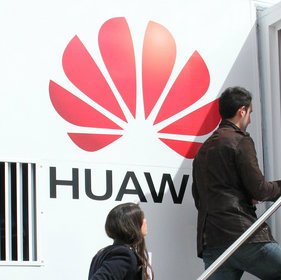Huawei builds out chip portfolio with dozens of investments
The Chinese equipment vendor is investing in dozens of companies across various parts of the semiconductor supply chain.

US chip sanctions may have crippled Huawei's handset business but they have not dented the company's own semiconductor ambitions.
In the past three years, Huawei has tipped cash into dozens of companies at various stages of the chip supply chain, mostly through its venture capital arm, Hubble Technology Investment Co.
The total value of the investments is not known, and while most have been relatively small, the volume is sharply increasing.
Last year the Shenzhen firm invested or increased its holding in 45 domestic companies, more than double the 2020 number, according to the Nikkei Asia Review.
Significantly, around 70% were in semiconductor and related fields – everything from semiconductor materials, optical and memory chips to EDA (electronic design automation), design tools and production gear.
One critical area of focus is chip packaging. Just last month Huawei established a manufacturing subsidiary, Huawei Precision Manufacturing, with paid-in capital of 600 million yuan (US$94.3 million) and a brief to develop chip packaging technologies, sources told Nikkei.
As Moore's Law declines, packaging has become one of the prime means of improving semiconductor performance and has become hotly contested between industry giants. The other attraction of the packaging segment for Huawei is it is not so strongly dominated by US firms.
Many of the other chip investments have been driven by a need to guarantee supply of key components or leading technologies ahead of competitors, a critical factor especially during the current bout of shortages.
There is no doubting the breadth of its portfolio.
One of Hubble's investments last year was RS Laser, China's first to master the excimer laser, one of the most advanced lithographic technologies. It has also taken a stake in Shenzhen EDA firm Ninecube, in Maxone Semiconductor, a supplier of wafer test cards, and in CMOS imaging sensor firm Smartsens.
Want to know more about 5G? Check out our dedicated 5G content channel here on Light Reading.
Some of the investments have paid off handsomely, such as in IC design company 3Peak in 2019 – where Huawei took an initial stake worth RMB72 million ($11.3 million) stake and then subsequently doubled it. After the company went public the value increased from RMB32.1 per share to RMB628, making the investment worth more than RMB2 billion ($315 million).
But Huawei has an internal rule restricting investments only build on the company's product and technology strengths. According to the "Huawei Basic Law" – basically a set of company business principles – investments must maximize resources and enhance technology or market strengths. The company should not engage in "unrelated diversification that diverts company resources and top management energies."
Huawei's semiconductor portfolio is also just one small and strategic part of a giant wave of semiconductor investment in China.
Chinese chip firms raised $26.5 billion up to early December last year, up 9% over 2020, along with tens of billions of yuan furnished by the government, the Wall Street Journal reported.
— Robert Clark, contributing editor, special to Light Reading
Read more about:
AsiaAbout the Author(s)
You May Also Like




_International_Software_Products.jpeg?width=300&auto=webp&quality=80&disable=upscale)







